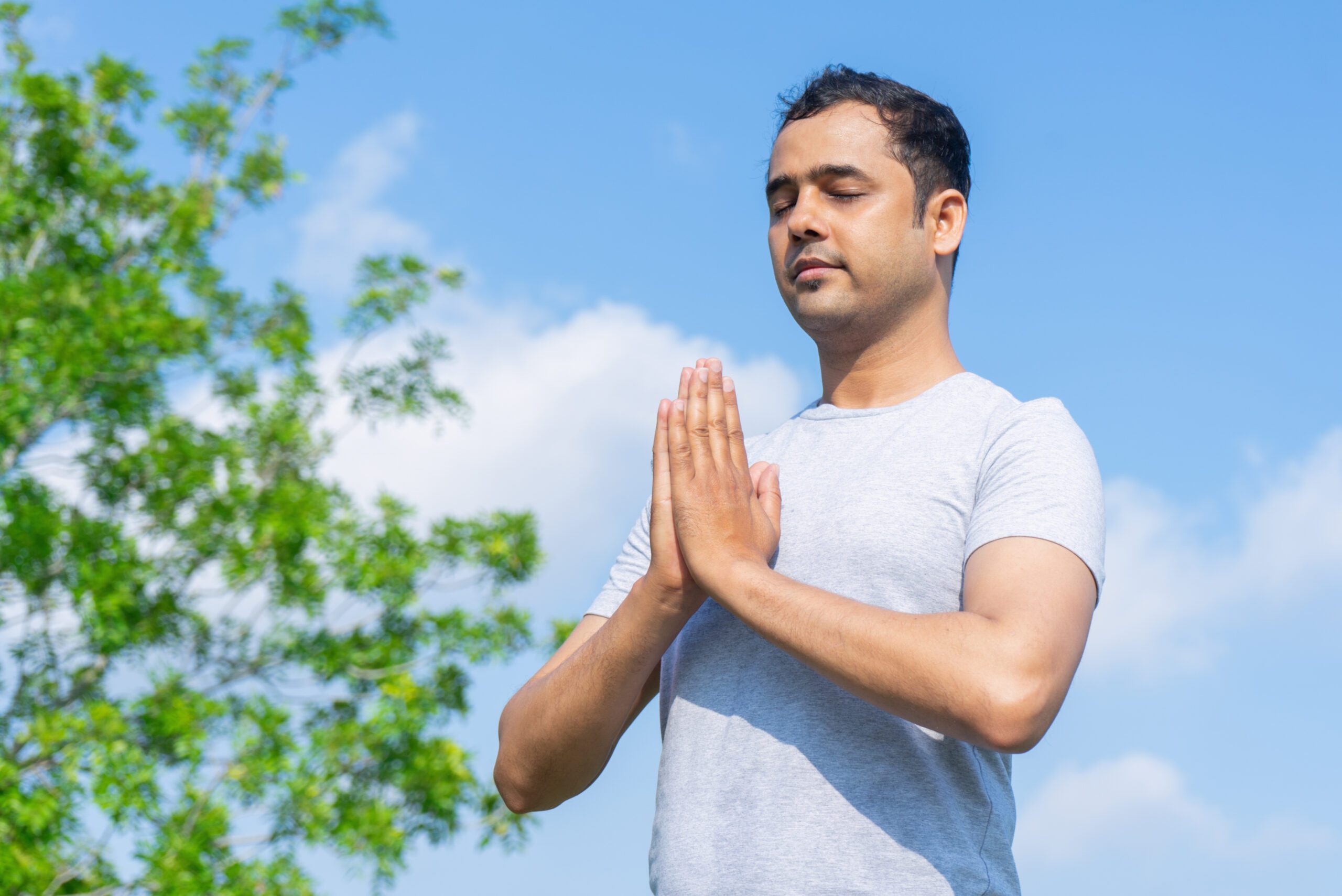Here, we are sharing information on the topic “how to do Indian meditation.” Hindu meditation, The two countries where Hinduism is most prevalent are India and Nepal. Hinduism, the predominant religion in India, Nepal, and Bali (Indonesia), has about one billion adherents, making it the third largest religion in the world by population. Hinduism has been dubbed the world’s “oldest religion,” and some adherents and academics refer to it as Santana Dharma, which means “the eternal law” or “the eternal way” that exists independently of humankind.

how to do Indian meditation
The two most well-known Hindu spiritual disciplines to gain popularity in modern times are yoga and meditation. The many and various forms of meditation practiced in the Hindu faith are outlined here, along with instructions and connections to further resources to aid you in your journey:
1. Yoga Meditation
-
History and Significance
“Yogic Meditation” refers to the various forms of meditation taught in the yoga tradition; it does not refer to a single type of meditation. “Unity” is the meaning of yoga. Tradition dates back to 1700 B.C., and its ultimate objective is self-knowledge and spiritual purity. Asanas (physical postures), pranayama (breathing exercises), yamas and niyamas (conduct rules), and pratyahara (contemplative meditation practices) are the categories into which classical yoga divides its practice.
-
How to carry it out
These are a few forms of yoga-based meditation. The “third eye meditation” is the most popular and widely used.
Third Eye Meditation: This technique involves concentrating attention on the “spot between the eyebrows,” which some refer to as “the third eye” or the “ajna chakra.” To quiet the mind, the focus is continuously brought back to this spot. The “silent gaps” between ideas grow larger and bigger with time. Occasionally, this is followed by actually “looking,” with closed eyes, in that direction.
Chakra meditation involves focusing on one of the body’s seven chakras, or “centers of energy.” Usually, this involves some visualization work and reciting a particular mantra for each chakra, which are lam, vam, ram, yam, ham, and om.
Fixing the gaze on an external object, usually a candle, image, or symbol (yantras), is known as gazing meditation (trataka). To train the mind’s capacity for both focus and vision, it is done with the eyes open first, and subsequently with them closed. You should maintain the image of the thing in your “mind’s eye” even after you have closed your eyes.
Kundalini meditation is an extremely intricate practice approach. The objective is to establish multiple psychic centers in the body, awaken the latent “kundalini energy” at the base of the spine, and ultimately achieve enlightenment. This practice carries a number of risks, so it should never be done without the supervision of a trained yoga instructor.
2. Mantra Meditation (OM Meditation)
-
Origin and Significance
A mantra is a word or syllable that is repeated to help focus your thoughts; it usually has no particular meaning. It is not an assertion that you use to persuade yourself of anything.
Because of the “vibration” connected with the sound and meaning of a word, some meditation teachers maintain that word choice and pronunciation are crucial, and that this is why receiving an initiation into meditation is necessary. Some claim that the word picked for the mantra is meaningless and serves merely as a mental focus technique.
Mantras are utilized in Jainism, Sikhism, Daoism (Taoism), Hinduism, and Buddhism (particularly Tibetan and “Pure Land” Buddhism). Mantra meditation is sometimes referred to as “om meditation,” yet there are many other mantras that can be utilized. Repeating the name of God aloud while feeling love is known as japa, a more devotional form of mantra practice.
-
How to carry it out
Like most meditations, it is typically done while sitting with the back of the chair facing up and your eyes closed. The practitioner then spends the entire session mentally repeating the mantra over and over.
This exercise is occasionally combined with awareness of one’s breathing or coordination of it. To help with concentration, the mantra is really uttered very softly and lightly in other exercises.
Deeper degrees of awareness can be experienced by the mind as a result of the mental vibration produced by repeating the mantra. The chant grows more hazy and fuzzy as you concentrate, until at last you are guided into the realm of pure awareness, where the vibration originated.
Reciting the mantra aloud allows you to break free from the stream of ideas so that you might perhaps enter the space between them. The mantra serves as a helpful tool to enhance your meditation routine. Mantras are thought of as ancient power phrases having subliminal meanings that facilitate our connection to spirit, the universe’s source. (Deepak Chopra)
3. Transcendental Meditation
-
History and Significance
A particular type of mantra meditation called transcendental meditation was first made popular in India and the West in 1955 by Maharishi Mahesh Yogi. The Maharishi became well-known as the guru of the Beatles, Beach Boys, and other superstars in the late 1960s and early 1970s.
With over 5 million practitioners globally, it is a popular type of meditation, and numerous studies supporting its advantages have been conducted by the organization. On the other hand, Maharishi and his organization are not without detractors.
-
How to carry it out
Teaching transcendental meditation is not a free practice. Paying to receive instruction from one of their certified instructors is the only way to acquire it. However, the assistance provided appears to be good.
All things considered, nevertheless, TM is generally understood to entail the use of a mantra and to be performed while sitting with one’s eyes closed for 15 to 20 minutes twice a day. The practitioner receives a different mantra according to his age and gender, and it is not unique. Also, these are Tantric names for Hindu deities, not just “meaningless sounds.”

Frequently asked questions
(how to do Indian meditation)
What is the Indian way of meditation?
Answer: Three Techniques for Indian Meditation
Repetition of a single word or phrase during meditation is known as mantra meditation, and it originated in the Hindu tradition. Herein is the “mantra.” The mantra serves as a center of concentration, similar to the breathing exercises used in the Anapanasati and Vipassana procedures.
How to meditate according to Gita?
Answer: Pick a level place that isn’t too high or too low, then take a firm seat on some cloth, a deer skin, and some kusha grass. After sitting down, make an effort to quiet your mind. When you meditate with a single point of focus, your heart will become pure.
How can I practice meditation in India?
Answer: Like most meditations, it is typically done while sitting with the back of the chair facing up and your eyes closed. The practitioner then spends the entire session mentally repeating the mantra over and over. This exercise is occasionally combined with awareness of one’s breathing or coordination of it.
Conclusion
(how to do Indian meditation)
In conclusion, Indian meditation provides a diverse range of methods for developing inner tranquility, awareness, and spiritual development. People can reap significant advantages for their physical, mental, and spiritual well-being by investigating various methods, including mindfulness meditation, mantra meditation, yoga nidra, and chakra meditation, and sincerely implementing them into a regular routine.
So, this is how the topic “how to do Indian meditation” has been addressed.
- For more information related to these topics, click here.
- You may also visit our Instagram page by clicking here.
- You may also visit our YouTube channel by clicking here






